SpringSecurity如何实现配置单个HttpSecurity
一、创建项目并导入依赖
<dependency><groupId>org.springframework.boot</groupId><artifactId>spring-boot-starter-security</artifactId></dependency><dependency><groupId>org.springframework.boot</groupId><artifactId>spring-boot-starter-web</artifactId></dependency>
二、相关配置和代码
在创建完项目时,我们得springboot项目所有接口都被保护起来了,如果要想访问必须登陆,用户名默认是user,密码在项目启动时生成在控制台。
1)我们可以设置自己得账户和密码,有两种方法配置
1.1)在application.properties中配置
spring.security.user.name=fernfei
spring.security.user.password=fernfei
spring.security.user.roles=admin
1.2)在配置类中配置
注:需要在配置类上加上@configuration注解
步骤1.2.1)
创建SecurityConfig继承WebSecurityConfigurerAdpater
步骤1.2.2)
实现WebSecurityConfigurerAdpater中的configure(AuthenticationManagerBuilder auth)方法
步骤1.2.3)
从 Spring5 开始,强制要求密码要加密,如果非不想加密,可 以使用一个过期的 PasswordEncoder 的实例
NoOpPasswordEncoder,但是不建议这么做,毕竟不安全。

这样就算完成自己定义账户密码了。
2)HttpSecurity配置
2.1)实现config(HttpSecurity http)方法
2.2)相关代码
@Override protected void configure(HttpSecurity http) throws Exception { http.authorizeRequests().antMatchers('/admin/**').hasRole('admin').antMatchers('/db/**').hasAnyRole('admin','user').antMatchers('/user/**').access('hasAnyRole(’admin’,’user’)')//剩下的其他路径请求验证之后就可以访问.anyRequest().authenticated().and().formLogin().loginProcessingUrl('/dologin').loginPage('/login').usernameParameter('uname').passwordParameter('pwd').successHandler(new AuthenticationSuccessHandler() { @Override public void onAuthenticationSuccess(HttpServletRequest request, HttpServletResponse response, Authentication authentication) throws IOException, ServletException { response.setContentType('application/json;charset=utf-8'); PrintWriter pw = response.getWriter(); Map<String, Object> map = new HashMap<String, Object>(); map.put('status', 200); map.put('msg', authentication.getPrincipal()); pw.write(new ObjectMapper().writeValueAsString(map)); pw.flush(); pw.close(); }}).failureHandler(new AuthenticationFailureHandler() { @Override public void onAuthenticationFailure(HttpServletRequest request, HttpServletResponse response, AuthenticationException exception) throws IOException, ServletException { response.setContentType('application/json;charset=utf-8'); PrintWriter pw = response.getWriter(); Map<String, Object> map = new HashMap<String, Object>(); map.put('status', 401); if (exception instanceof LockedException) { map.put('msg', '账户被锁定,登陆失败!'); } else if (exception instanceof BadCredentialsException) { map.put('msg', '账户或者密码错误,登陆失败!'); } else if (exception instanceof DisabledException) { map.put('msg', '账户被禁用,登陆失败!'); } else if (exception instanceof AccountExpiredException) { map.put('msg', '账户已过期,登陆失败!'); } else if (exception instanceof CredentialsExpiredException) { map.put('msg', '密码已过期,登陆失败!'); } else { map.put('msg', '登陆失败!'); } pw.write(new ObjectMapper().writeValueAsString(map)); pw.flush(); pw.close(); }}).permitAll().and().csrf().disable(); }
2.3)代码解释
2.3.1)/admin/**路径下的必须有admin角色才能访问
.antMatchers('/admin/**').hasRole('admin')
2.3.2)/db/**和/user/**下的路径,admin和user角色都可以访问
.antMatchers('/db/**').hasAnyRole('admin','user')
.antMatchers('/user/**').access('hasAnyRole(’admin’,’user’)')
2.3.3)表示剩下的任何请求只要验证之后都可以访问
.anyRequest().authenticated()
2.3.4)开启表单登陆
.formLogin()
2.3.5)登陆处理的路径
.loginProcessingUrl('/dologin')
2.3.6)登陆的页面,如果不写会使用默认的登陆页面
.loginPage('/login')
2.3.7)定义登录时,用户名的 key,默认为 username
.usernameParameter('uname')
2.3.7)定义登录时,用户名的 key,默认为 password
.passwordParameter('pwd')
2.3.8)登陆成功的处理(用于前后端分离时,直接返回json
.successHandler()
红框里面的类是存放登陆成功后的用户信息

2.3.9)下图就是登陆成功后直接返回url的方法
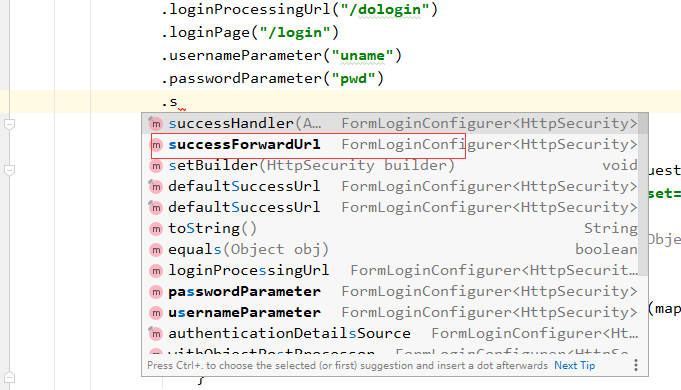
2.3.10)同上,登陆失败的处理
.failureHandler()
判断属于哪个异常可以更友好给用户作出提示
可以进入这个类按Ctrl+H查看类的继承关系,方便更好使用
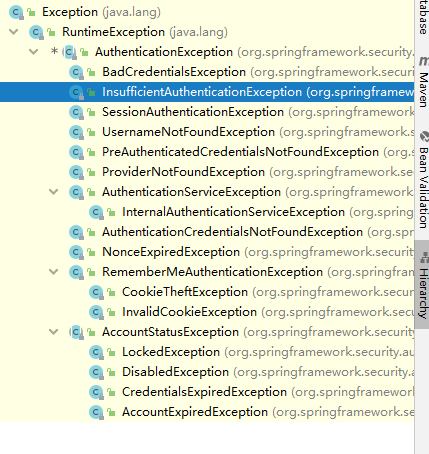
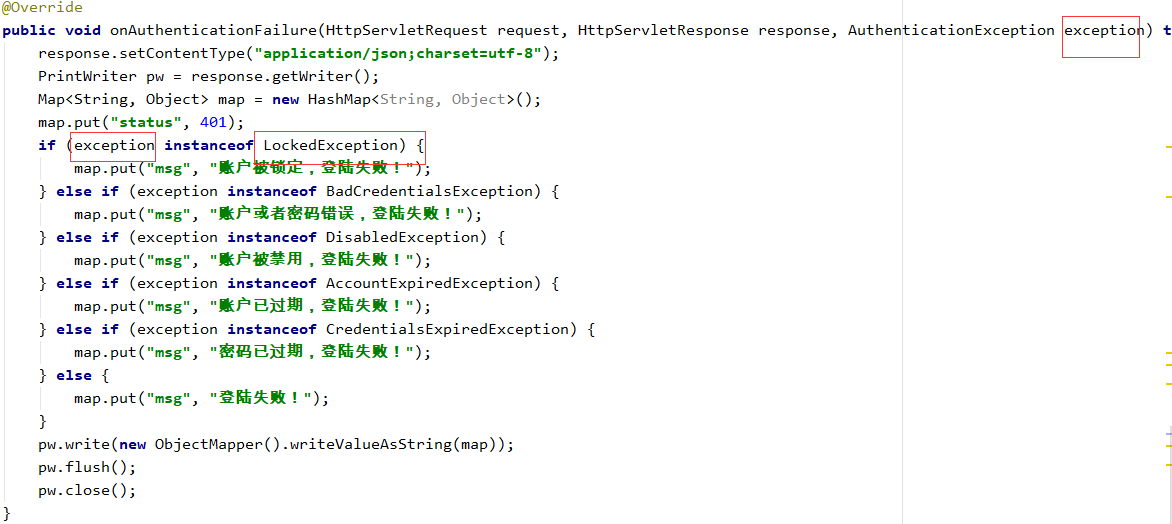
2.3.11)permitALL()表示放开和登陆有关的接口,csrf是关闭csrf,以便我们在 postman类似的软件测试被系统给拦截了
.permitAll()
.and()
.csrf().disable();
3)controller层设置一些接口以便我们测试
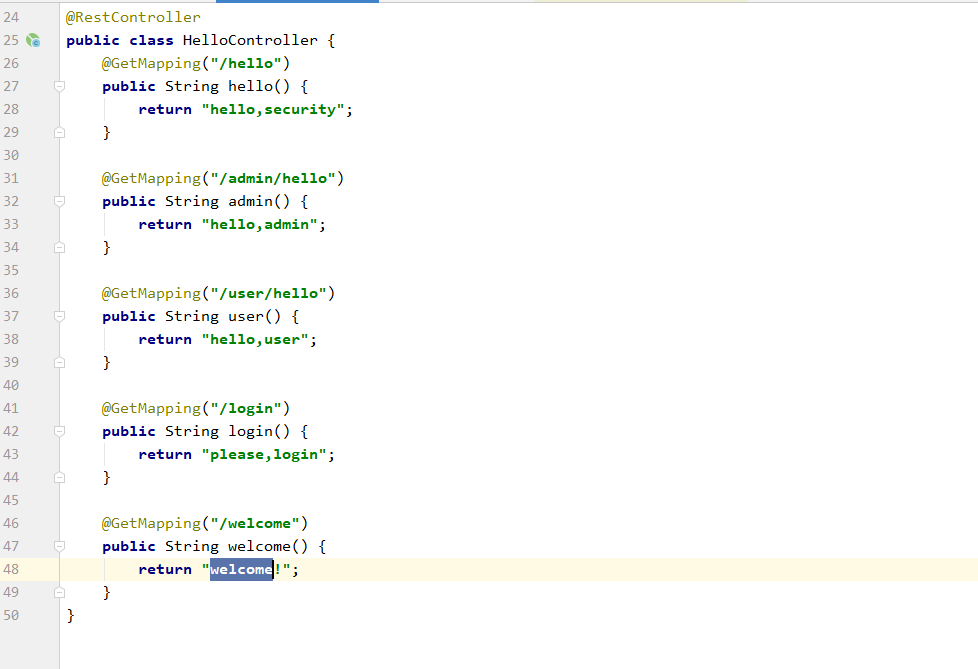
以上就是本文的全部内容,希望对大家的学习有所帮助,也希望大家多多支持好吧啦网。
相关文章:
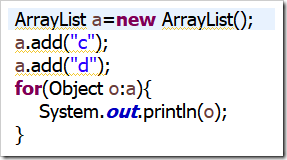
 网公网安备
网公网安备